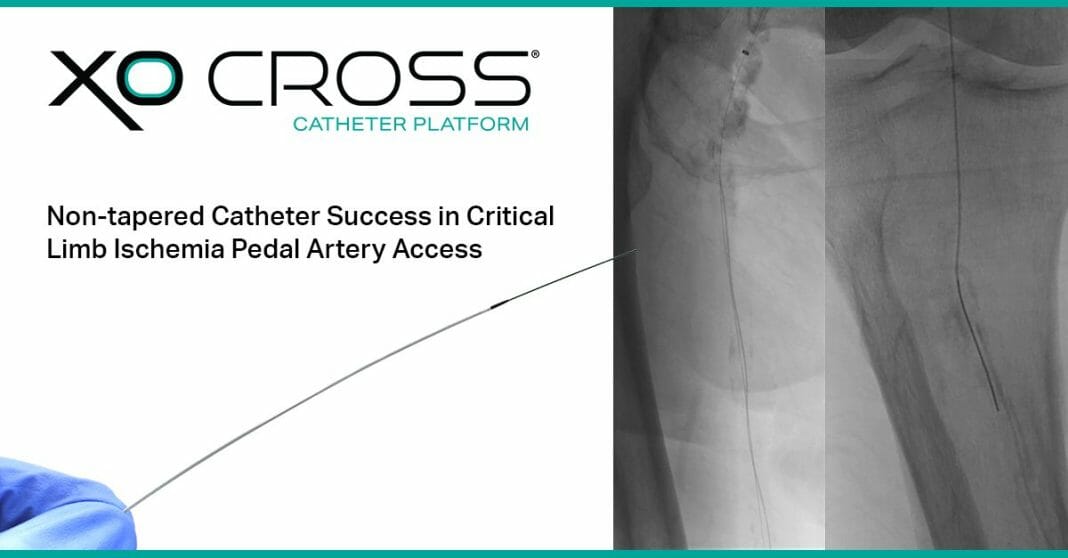XO Cross Catheter Platform successfully used in peripheral vascular procedures utilizing pedal artery retrograde access to treat complex Critical Limb Ischemia (CLI) patients.
Transit Scientific reports multiple successful peripheral vascular procedures with the XO Cross Catheter Platform utilizing pedal retrograde access. The non-tapered 2Fr XO Cross 14 Microcatheter in 90cm, 135cm, and 175cm lengths is designed to facilitate guidewire support, guidewire exchange, and contrast media injection during complex peripheral vascular interventions.
“2Fr 014 catheter-guidewire systems are an important tool for pedal and below-the-knee interventions,” said Dr. George Adams, Interventional Cardiology Director Cardiovascular and Peripheral Vascular Research at UNC REX Healthcare. “The XO Cross incorporates a non-tapered torquable shaft design which supports a smaller and less invasive access site from below. Tools like these can help broaden options for approaches and access techniques in CLI patients.”
Critical limb ischemia (CLI) is a severe degree of peripheral artery disease (PAD) that requires intervention to avoid limb loss and its associated complications. The standard treatment strategy for tibial lesions involves either a retrograde or antegrade femoral artery approach, but in many patients, this strategy poses challenges due to the presence of widespread multilevel disease, long and complex lesions, and the common involvement of tibial vessels. The retrograde pedal/tibial approach is an alternative way to treat this challenging patient population.
The XO Cross Catheter Platform introduces new levels of pushability, trackability, flexibility, and torque response to access challenging lesions and complex anatomy. XO Cross’s non-tapered, metal-alloy and polymer construction delivers high fatigue resistance against tough lesions found in late-stage peripheral artery disease (PAD) and critical limb ischemia (CLI).
Dr. Richard Saxon of Tri-City Medical Center, Oceanside, CA shared, “A patient presented with trifurcation disease and severe calcifications in the superficial femoral artery (SFA), popliteal, and the posterior tibial (PT) artery. The low-profile and pushability of the XO Cross 14 enabled pedal retrograde access following failed crossing and wire from above. A second XO Cross 14 (135cm) was used from above to support a flossing technique and subsequent angioplasty treatment. The unique non-tapered design of the XO Cross lends itself well to challenging limb salvage procedures that often require multiple access sites and different approaches to achieve a good outcome.”
Transit Scientific’s XO Cross Platform features (24) FDA-cleared devices including 2Fr XO Cross 14 Microcaths, 2.6Fr XO Cross 18 Microcaths, and the 3.8Fr XO Cross 35 Support Catheters for use with standard 0.014”, 0.018”, and 0.035” guidewires in 90cm, 135cm, 150cm, and 175cm lengths.
Transit Scientific is a private company that designs, develops, and commercializes medical devices including the FDA-cleared and CE Mark-cleared XO Score® and XO Cross® platforms plus the XO Cath Interventional Oncology and XO CS Coronary System under development. Transit Scientific has 20+ combined issued and pending U.S. and global patents.
